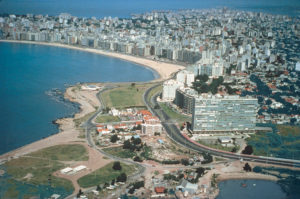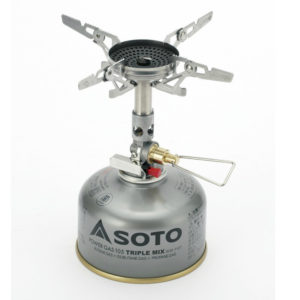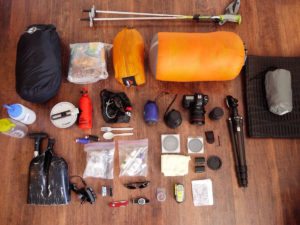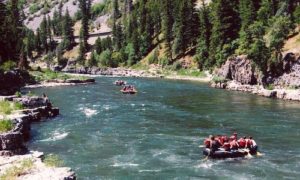 A friend of the writer lived in Montevideo Uruguay in 1995, 1996 and intermittently in 1997. These are her notes and thoughts about living there along with the things to see while there.
A friend of the writer lived in Montevideo Uruguay in 1995, 1996 and intermittently in 1997. These are her notes and thoughts about living there along with the things to see while there.
I lived there again in 2009 as well as spent vacations for 1 or 2 months at a time in 2011, 2014 and 2016. I am currently trying to arrange another month long vacation for March 2018.
Over all these years I was lucky to travel extensively for the job and for pleasure. I can say I’ve visited every corner of the country.
My two favorite areas to live are Pocitos and Punta Carretas in Montevideo Uruguay. They are adjacent areas with numerous restaurants, cafes and shopping. They are mostly apartment buildings with some older homes in the mix. The two areas stretch up from the Beaches and include parks where there are numerous vendors and booths every Saturday.
Punta Carretas has a large 3 storey Shopping Center, named Punta Carretas on Ellauri St. and there are some great boutiques and shops and a top floor with movie theaters, most in English with sub titles and a food court and a couple of restaurants. The bottom floor has a large supermarket called the Disco and all the usual shops you’d expect to find in a Shopping Centre. It used to be a prison in the past and has the original facade. There are 2 restaurants at the entrance gates, McDonald’s and an Italian café-restaurant called Don Pepperone. It is very casual and has a large patio.
Montevideo Uruguay Sheraton Hotel
The Sheraton Hotel is right behind the shopping center and is accessible from the 2nd floor. It is very modern and has a nice lounge and restaurant. Just a block or 2 from the Sheraton, towards the water and the Rambla, the street that follows the shoreline is one of my favorite restaurants. La Perdiz. It has a small patio, great food and is a favorite of locals and expats. Tel 2711-8963
There is reliable public transportation and taxis are very reasonably priced with taxi stands on main corners and easily accessible by phone.
The whole City is on a wide point and Pocitos and Punta Carretas as split into each side of a point by the street 21 de setiembre which runs from the beach and up.
My favorite restaurants in this area besides La Perdiz are:
Fellinis – Corner of Benito Blanco and Marti, Tel 2706-0252 Try the Brie and Carmelized Onion Appetizer
La Cavia – corner of 26 de Marzo and Cavia, Tel 2706-8253 Good BBQ (Parrilla in Spanish)
Da Pentella – Corner of Luis de la Torre and Francisco Ros, Tel 271200981 Very intimate and cozy
Mercado Del Puerto in the Old City Montevideo Uruguay:
El Palenque – in the Port área where the cruise ships dock – Tel 2915-4704 This is a great spot for Saturday and Sunday afternoons with a huge patio and the best Petit Filet, with mushroom sauce or my favorite, Roquefort Sauce. There is always lots of action in this area with vendors selling art, jewelry, handmade toys, leather purses and other touristy stuff.
There are a lot of restaurants in Montevideo Uruguay but these are some of the best I’ve experienced, with great food and great value for price.
If you get a chance to get out of the city for a weekend there is good bus service between Montevideo from the main bus station at Tres Cruces. It is only about 1 ½ hours to Punta Del Este a favorite tourist spot for visitors with hotels and many restaurants. One side of the point has big waves and attracts surfers and the other side has nice beaches and many with restaurants that offer beach chairs to rent and service to your spot. It is close to Barra, another interesting beach town. They probably have tours to showcase both places. If you take a tour don’t miss Casa Pueblo just outside Punta De Este.
Weekend Trips around Montevideo Uruguay
Another easy weekend trip is to Buenos Aires. You can fly there in a half hour and land in the airport close to the city and many hotels. As a Canadian you need to secure a Reciprical Visa which is available on-line and must be purchased prior to going. Although I’ve flown in the past, it is always easy to take the Ferry Buquebus from Montevideo to the port in BA. I prefer to take the land Buquebus to Colonia and then the fast Buquebus Ferry from there to the BA port, only 45 minutes but then I get seasick. Buquebus has its own tour company and it is located on a side street just across from Punta Carretas Shopping.
The last time I was there I was able to get a 3-night stay at the Hotel Americana in Buenos Aires for around $230 US and that included the Hotel, bus from Montevideo Uruguay to the Port in Colonia, the fast ferry to BA port, be met by a driver in BA who takes you to the hotel and pick-up by the driver on departure day and the return trip. A real bargain.
Friday Night Dinner
When I go on a Friday night I always go to the Puerto Madero for dinner on Friday and highly recommend Bice, an Italian Restaurant with great Veal Marsala, we go to Buceos on Saturdays, a very colorful area with restaurants shops and street vendors. I recommend visiting Senor Tango Saturday evening. You can purchase your ticket at the hotel, and it includes pick up by a bus, a full dinner in the nightclub and if you go alone, they will set you with other guests, very friendly, wine, and a pick up by the bus after the show, usually around 1AM. The bus driver gives you the bus number when you arrive so you can easily find it on departure. As you’ve paid at the hotel, you just need some cash for restaurant and bus tips. The show is excellent with a troupe of dancers and singers who entertain throughout dinner and afterwards. I think it was around $70 the last time I went.
Sunday is ideal for visiting San Telmo, another area full of vendors with a lot of antiques and artists. It is just nice to relax at a café and watch the world go by. All the taxi drivers are familiar with these places and they are great walking around spots. If I were there I’d probably go back to Puerto Madero for dinner on Sunday evening.
An Italian Restaurant
There is another Italian Restaurant just to the left of Bice. Which is also very good with a lovely patio and view. Of course there is the beautiful Opera House Teatro Colon. Which has a great opera and ballet season or is just great to visit on their tours. It is fascinating and takes you down below the street to visit the costume makers, set makers, set carpenters. Also the orchestra and ballet school practices. I went there once to see Aida and it was spectacular.
I highly recommend taking the City Tour of Montevideo Uruguay if you make it to BA because it certainly gives you the flavor of the city. Of course that is also an interesting way to see Montevideo but I’m guessing as a world traveler I don’t have to tell you that.
For more posts about South America places to visit, click here.


 Backpacking stoves have continued to get smaller, lighter, and easier to use. With advances in stove design, improvements in pre-prepared backpacking food, more people are choosing a backpacking stove. This has resulted in more choices for consumers, who are often uncertain about what advantages different types of stoves offer.
Backpacking stoves have continued to get smaller, lighter, and easier to use. With advances in stove design, improvements in pre-prepared backpacking food, more people are choosing a backpacking stove. This has resulted in more choices for consumers, who are often uncertain about what advantages different types of stoves offer. Maybe you don’t need to learn about survival clothing. Maybe you always hike with a spare jacket. Perhaps you never go out into the wilderness overnight, but just for day hikes. Or you bring lots of warm clothing when you do go backpacking. This post is about Survival Clothing For Outdoor Emergencies, something we should all know about.
Maybe you don’t need to learn about survival clothing. Maybe you always hike with a spare jacket. Perhaps you never go out into the wilderness overnight, but just for day hikes. Or you bring lots of warm clothing when you do go backpacking. This post is about Survival Clothing For Outdoor Emergencies, something we should all know about. This rotten winter might have you hankering to take a vacation. And the less-than-robust economy means you’d probably like to travel for the least amount of money. It is time for money saving travel tips. Always look for deals and ways to save money, but you need to watch out for scams as well. If your planning a vacation check out all of the deals, take advantage of traveling in time frames that are not as popular.
This rotten winter might have you hankering to take a vacation. And the less-than-robust economy means you’d probably like to travel for the least amount of money. It is time for money saving travel tips. Always look for deals and ways to save money, but you need to watch out for scams as well. If your planning a vacation check out all of the deals, take advantage of traveling in time frames that are not as popular. Ultralight backpackers want to give up weight, not comfort. Sleeping Pads For Lightweight Backpacking are pretty much a necessity for backpacking comfort, but who wants to carry those monstrous old inflatables down the trail? Try some of these lightweight options instead.
Ultralight backpackers want to give up weight, not comfort. Sleeping Pads For Lightweight Backpacking are pretty much a necessity for backpacking comfort, but who wants to carry those monstrous old inflatables down the trail? Try some of these lightweight options instead. Knowing a few edible wild plants can make your next backpacking trip, or any trip into the wilderness, a lot more enjoyable. Eat Plants While You Are Hiking should be taken seriously to avoid eating the wrong plants that can be poisonous or make you sick.
Knowing a few edible wild plants can make your next backpacking trip, or any trip into the wilderness, a lot more enjoyable. Eat Plants While You Are Hiking should be taken seriously to avoid eating the wrong plants that can be poisonous or make you sick. Are walking sticks longer than trekking poles? What about hiking staffs and hiking sticks? Whatever you call them, and whatever their differences, they are supposed to help your knees more than anything. Trekking Poles And Hiking Staffs help your balance on narrow paths. This they do very well, at least when you’re going downhill.
Are walking sticks longer than trekking poles? What about hiking staffs and hiking sticks? Whatever you call them, and whatever their differences, they are supposed to help your knees more than anything. Trekking Poles And Hiking Staffs help your balance on narrow paths. This they do very well, at least when you’re going downhill. A friend of the writer lived in Montevideo Uruguay in 1995, 1996 and intermittently in 1997. These are her notes and thoughts about living there along with the things to see while there.
A friend of the writer lived in Montevideo Uruguay in 1995, 1996 and intermittently in 1997. These are her notes and thoughts about living there along with the things to see while there. Jackson Hole rafting is home to one of the most exiting activities in the world. As a result White Water Rafting has quickly become a summer activity favorite in this area. There are rafting trips with the calm, scenic upper Snake River offering a unique perspective of Grand Teton National Park. Above all there is the wild and exciting Lower Snake River.
Jackson Hole rafting is home to one of the most exiting activities in the world. As a result White Water Rafting has quickly become a summer activity favorite in this area. There are rafting trips with the calm, scenic upper Snake River offering a unique perspective of Grand Teton National Park. Above all there is the wild and exciting Lower Snake River.